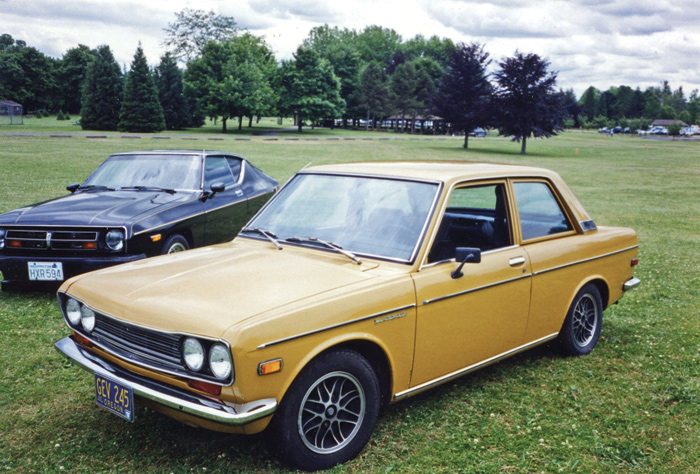 A racing legacy
A racing legacy For me, the most desirable of the U.S.-spec models are the 1970–73 2-door models, which solidified Datsun’s reputation in the ranks of SCCA road racing. Despite the fact that the 510 was not initially marketed in the U.S. as a performance-oriented car, its success in the Trans-Am Championship under Peter Brock’s stewardship guaranteed the 510’s status as a racing icon.
Brock’s BRE team, with driver John Morton, campaigned the 510s that famously beat the Alfa Romeo GTAs and BMW 2002s to win the SCCA Trans-Am Under-2.5 Liter Championship in 1971 and 1972.
Racing successes led to a strong performance aftermarket for the 510. The easy interchangeability of parts among other Datsun models made installing later Datsun 1800-cc and 2000-cc engines and 5-speed manual transmissions easy and common. As such, finding a “matching numbers” 510 these days can be difficult indeed!
In more recent years, younger generations have installed 1990s SR20DE and SR20DET turbo motors, often with other modern upgrades, such as 16-inch and 17-inch wheels.
However, the cars that are poised to be most collectible will be those preserved or restored to a “period” specification — specifically cars that ditch the modern power in place of the old Datsun L-series motors, and forego modern wheel/tire combinations and opt for the 13x7 American Racing Libra wheels that look so good on a properly set-up 510. Stock examples — if they still exist — are also collectible.
The 510 was the first proper Japanese sports compact car sold on American shores, and it established a performance reputation for the Datsun brand. The 510 became a pop culture icon as a cheap, reliable, fun car that was easy to modify and race.
Collecting 510s today
Values in specialty vehicles from the late 1960s through the early 1980s are on the rise, and the best 510s appear to fall into the same space as the BMW 1600/2002, Alfa Romeo GTV, and Porsche’s 1965–73 911/912.
The difficulty really is in finding a good 510 to buy, as many that survive have been neglected and/or modified poorly — and many cars succumbed to rust issues. Most of the cars on Craigslist or eBay tend to fall into the “run hard and put away wet” category, inhabiting the $1,500–$6,000 space where the majority of 510s tend to be priced.
However, good cars are out there, and relatively decent 2-doors can be found from roughly $10k and up. The nicest cars don’t often trade hands publicly, so it’s difficult to establish a ceiling, but I did hear of one buyer considering a $40k-plus purchase of an exceptionally well-executed BRE 510 2-door tribute car.
Four-door cars and wagons will be worth less — perhaps 60%–70% of what a comparable 2-door should bring.
While mechanical components for 510s are not difficult to source, and the cars themselves tend to be reliable and easy to work on, items needed for restoration — trim, rubber components, and period performance parts — can be difficult to find. But the growing interest in Japanese collector cars will probably improve the parts situation.
With a dwindling supply of cars, and prices up for all important cars of its generation, it seems the time is now to find and snap up a good Datsun 510. ♦